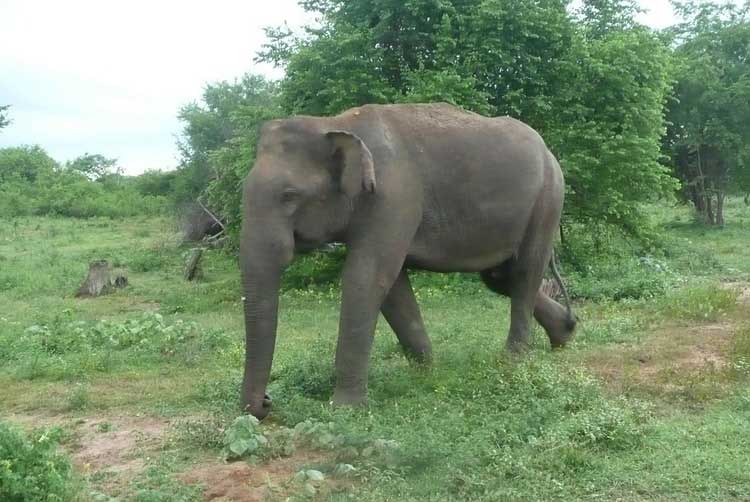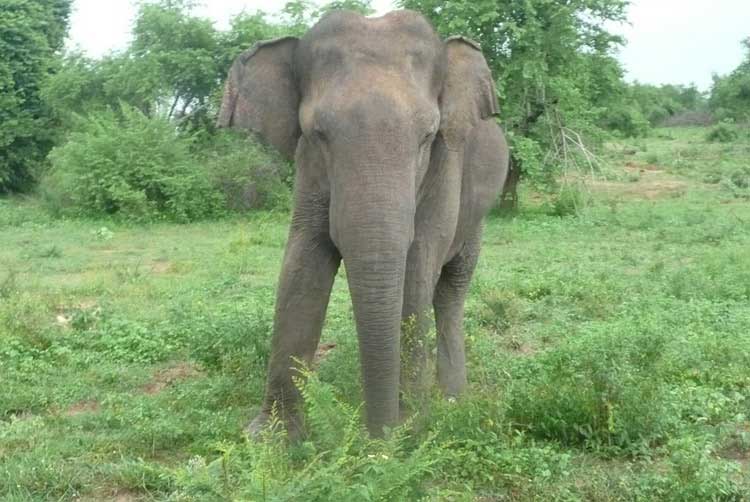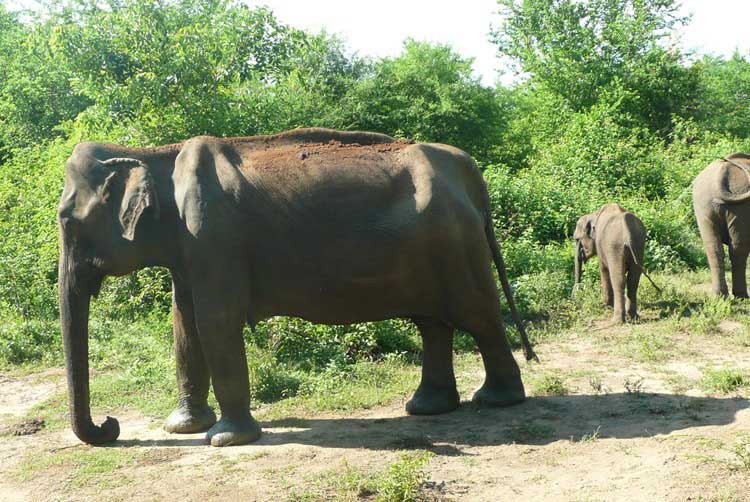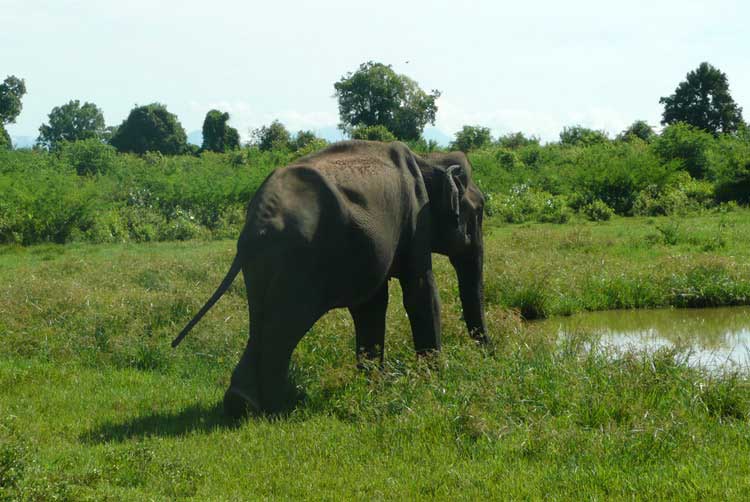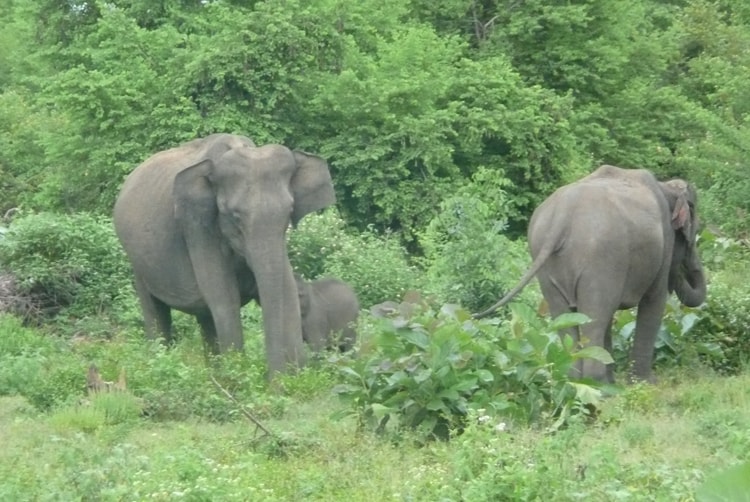 It’s back to Sri Lanka, and almost immediately into safari mode. I am fortunate that the Udawalawa reserve is just a 2 hour drive from where I live, and I have been several times to this impressive location, just south of the hills and mountains of Sri Lanka’s finest tea country. Adams Peak can be seen rising in the distance. I’ve written about going on safari at Udawalawa before  and it is always a great pleasure to be able bounce around amongst wild untamed lands. Udawalawa has Sri Lanka’s highest population of wild elephant, and my guest specifically wanted to see these. We were going to be in for a treat.
It’s back to Sri Lanka, and almost immediately into safari mode. I am fortunate that the Udawalawa reserve is just a 2 hour drive from where I live, and I have been several times to this impressive location, just south of the hills and mountains of Sri Lanka’s finest tea country. Adams Peak can be seen rising in the distance. I’ve written about going on safari at Udawalawa before  and it is always a great pleasure to be able bounce around amongst wild untamed lands. Udawalawa has Sri Lanka’s highest population of wild elephant, and my guest specifically wanted to see these. We were going to be in for a treat.
Udawalawa is partly man made as a large area was flooded to provide an aquaculture industry for local villagers, in return for them moving off certain sections of the reserve. This has been successful on many counts, firstly because as one comes into the village (driving past “beware of Peacocks” signs en route) several shops are selling local fish, some fresh, others smoked.
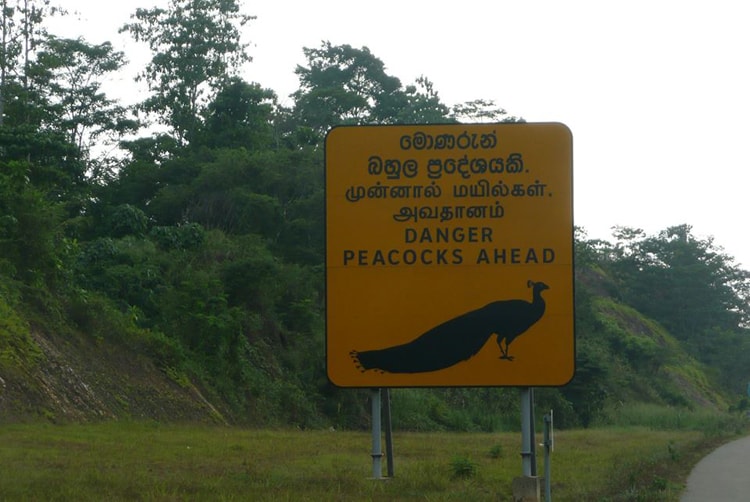 However the lake now also provides a sanctuary for many other bird species, including rarities on migration routes, as well as other aquatic animals such as Crocodiles and the very rare Fishing Cat. Other species also need proximity to water, including of course elephant. At times Udawalawa can seem almost primeval, as we arrive early morning the sky is already dark, with far off lightening crackling the sky and heavy ominous rain clouds rolling across the horizon. With the wretched banshee screech of wild peacock and the occasional trumpeting elephant, Udawalawa is rather a long way from human civilization.
However the lake now also provides a sanctuary for many other bird species, including rarities on migration routes, as well as other aquatic animals such as Crocodiles and the very rare Fishing Cat. Other species also need proximity to water, including of course elephant. At times Udawalawa can seem almost primeval, as we arrive early morning the sky is already dark, with far off lightening crackling the sky and heavy ominous rain clouds rolling across the horizon. With the wretched banshee screech of wild peacock and the occasional trumpeting elephant, Udawalawa is rather a long way from human civilization.
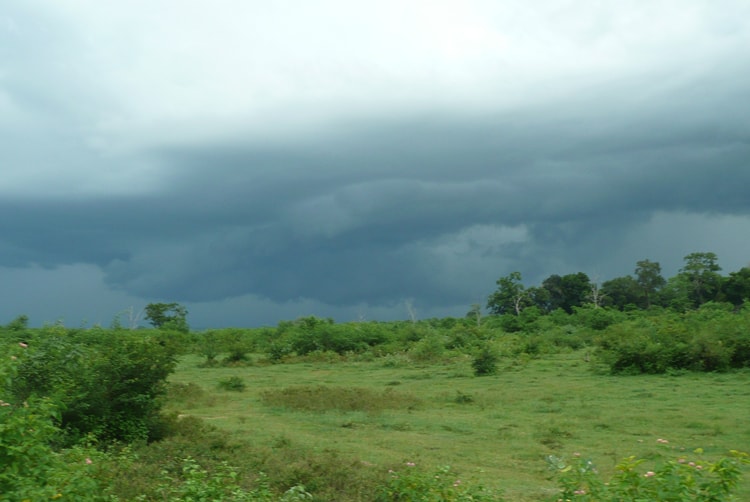 With the changing weather, the Elephant also appear restless. There is not a huge amount of cover at Udawalawa, and there are several calves about. Wild Elephant are dangerous, and we are forbidden to get out of our open sided safari vehicle. Tourists are often mislead by zoo animals or the placidity of trained elephants, but these are massive creatures. Of the Asian Elephants, the Sri Lankan Elephant is considered a distinct sub species, the others being the Indian and Sumatran Elephants. Of these, the Sri Lankan Elephant is the largest, and can weigh up to three tons. Standing up to 12 feet high, one kick from these or a blow from the trunk can kill. They have also been known to trample, and like many wild animals are highly protective of their young. Coming between a Mother Elephant and her Calf would almost certainly mean death. Males too, can become aggressive, and especially so during breeding season. They have been known to attack cars.
With the changing weather, the Elephant also appear restless. There is not a huge amount of cover at Udawalawa, and there are several calves about. Wild Elephant are dangerous, and we are forbidden to get out of our open sided safari vehicle. Tourists are often mislead by zoo animals or the placidity of trained elephants, but these are massive creatures. Of the Asian Elephants, the Sri Lankan Elephant is considered a distinct sub species, the others being the Indian and Sumatran Elephants. Of these, the Sri Lankan Elephant is the largest, and can weigh up to three tons. Standing up to 12 feet high, one kick from these or a blow from the trunk can kill. They have also been known to trample, and like many wild animals are highly protective of their young. Coming between a Mother Elephant and her Calf would almost certainly mean death. Males too, can become aggressive, and especially so during breeding season. They have been known to attack cars.
We come across several Elephant, with a Calf. They are very close and we remain quiet with the vehicle engine turned off, although the driver is ready if necessary to immediately restart the engine and get the hell out if necessary. The Mother and what appears to be other Females keep the Calf away from the vehicle, ensuring that they are always between it and our safari jeep. Close by, a Bull elephant grazes but with one eye on us at all times. They are peaceful, but a wrong move or sudden sound from us could startle them. Elephants will not ask questions when there are young about.
Later, a curious lone Male inspects us. He is huge, and gets very close to the vehicle. Just one annoyed swing of that trunk and he could hit us upside the head. Elephants are generally peaceful, and do have a natural curiosity, but it is best to keep wild ones at arms length. Still, he is an awesome sight, majestic yet quiet. Elephants when grazing do not make much noise, even when walking their footprints are very soft, and elephants tread carefully. Falling over on soft or unstable ground could be fatal for a creature this size, and they are careful, yet wary.
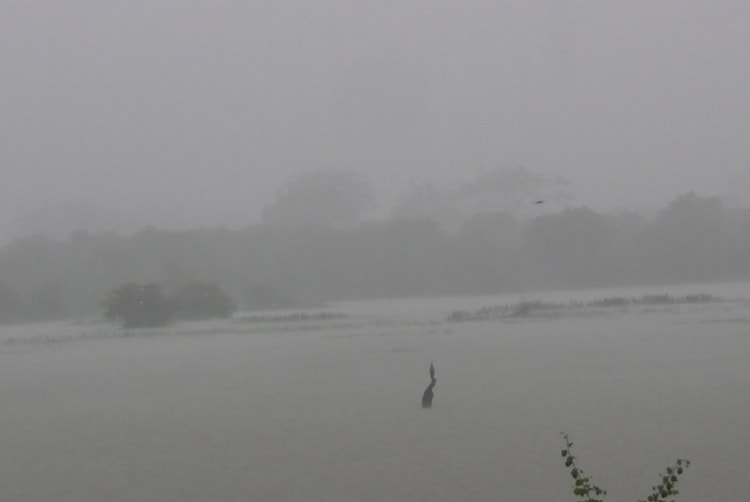 After a torrential downpour, which reduces visibility to just a few feet and almost obscures the lake, the sky breaks, and the clouds lift to brilliant sunshine. The Elephant are calmer now, the electricity tension in the air has dissipated and they are cooler after the rains. Its almost as if a sense of relief casts a spell across the park, normal weather service is resumed.
After a torrential downpour, which reduces visibility to just a few feet and almost obscures the lake, the sky breaks, and the clouds lift to brilliant sunshine. The Elephant are calmer now, the electricity tension in the air has dissipated and they are cooler after the rains. Its almost as if a sense of relief casts a spell across the park, normal weather service is resumed.
The Elephant begin to graze again, and visit water holes, refreshed and replenished after the downpour. It is a magical moment, caught in the midst of a tropical rain storm amongst the Elephant. The rain has cleansed the Park of tensions as well as providing much needed moisture and coolness. We have to head back to our piped electricity, heated water and aircons. But at Udawalawa, the elephant have all they need, and do not care for the false needs of modern man. I enjoyed sharing the ancient with them.
